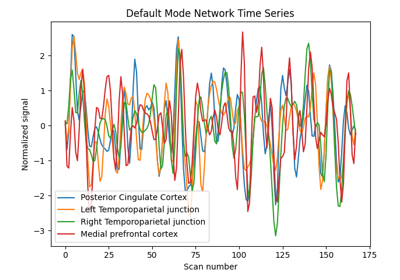Note
This page is a reference documentation. It only explains the function signature, and not how to use it. Please refer to the user guide for the big picture.
nilearn.datasets.fetch_coords_power_2011#
- nilearn.datasets.fetch_coords_power_2011(legacy_format=True)[source]#
Download and load the Power et al. brain atlas composed of 264 ROIs.
See 1.
- Parameters
- legacy_format
bool, optional If set to
True, the fetcher will return recarrays. Otherwise, it will return pandas dataframes. Default=True.
- legacy_format
- Returns
- data
sklearn.utils.Bunch Dictionary-like object, contains:
‘rois’:
numpy.recarray, rec array containing the coordinates of 264 ROIs in MNI space. Iflegacy_formatis set toFalse, this is apandas.DataFrame.‘description’:
str, description of the atlas.
- data
References
- 1
Jonathan D. Power, Alexander L. Cohen, Steven M. Nelson, Gagan S. Wig, Kelly Anne Barnes, Jessica A. Church, Alecia C. Vogel, Timothy O. Laumann, Fran M. Miezin, Bradley L. Schlaggar, and Steven E. Petersen. Functional network organization of the human brain. Neuron, 72(4):665–678, Nov 2011. URL: https://doi.org/10.1016/j.neuron.2011.09.006, doi:10.1016/j.neuron.2011.09.006.
